How to select the ideal LED pendant light for modern interiors
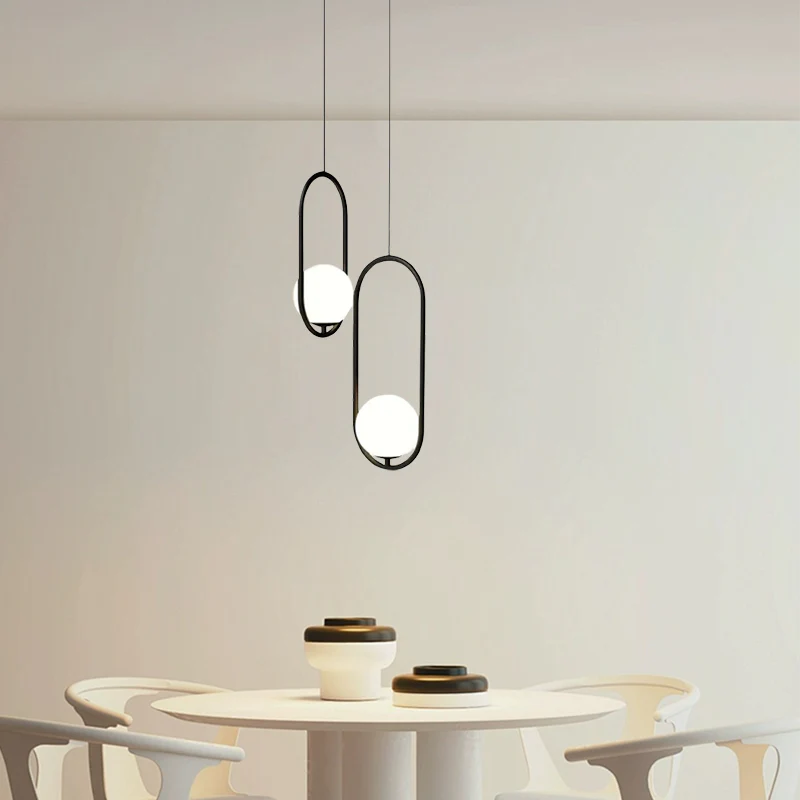
LED pendant lights are a game-changer for modern interiors. They combine sleek designs with advanced lighting technology to elevate both functionality and aesthetics. When you install a modern pendant light, it not only brightens your space but also adds a sophisticated charm. Choosing a pendant light involves more than just style—it requires careful thought about placement, size, and purpose to ensure harmony with the room's proportions.
LED lighting has revolutionised home decor by offering energy-efficient options that reduce electricity costs. These lights consume significantly less energy and last longer than traditional bulbs, making them ideal for eco-conscious households. Additionally, advancements in LED technology have enabled manufacturers to create versatile designs that cater to diverse tastes. As a result, LED pendant lights are now favoured for their ability to blend energy efficiency with stylish appeal, helping you craft a sustainable yet elegant living environment.
Key Takeaways
Think about where and why you need the light. Decide if it will be for work, general lighting, or decoration to improve the room's use.
Pick the right size for balance. The pendant light should be no bigger than one-third the width of the surface below it.
Match the design to your room's style. Choose lights that fit your home's look and colours for a neat appearance.
Focus on saving energy. LED pendant lights use less power and last longer, helping you save money and protect the environment.
Check out different pendant light types. From straight designs to creative shapes, find ones that fit your space and taste for a trendy update.
Key Factors to Choose Pendant Lights
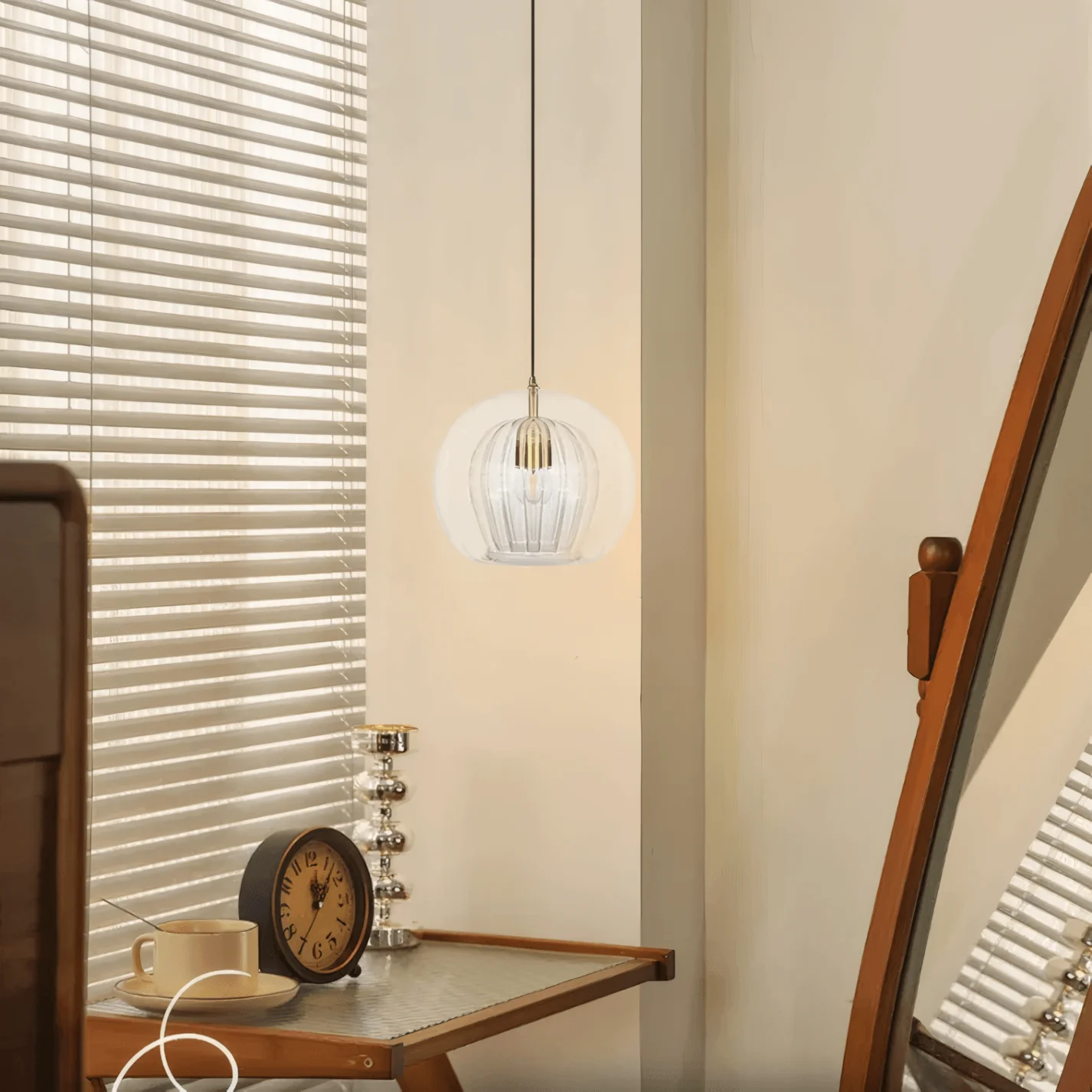
Placement and Purpose
When selecting pendant lighting, placement and purpose should be your first considerations. The location of the light determines its functionality and impact on the room's ambience. For instance, a pendant light above a dining table creates a focal point, while one in a hallway provides general illumination. You should assess the room's layout and decide whether the light will serve as task lighting, ambient lighting, or decorative lighting.
In kitchens, pendant lighting often serves a dual purpose. It illuminates workspaces like countertops while enhancing the room's overall aesthetic. In contrast, pendant lights in living rooms or bedrooms often prioritise mood and style. By understanding the purpose of the light, you can ensure it complements the room's function and enhances its usability.
Size and Proportion
The size of your pendant light plays a crucial role in maintaining balance within a space. A fixture that is too large can overwhelm the room, while one that is too small may fail to make an impact. To choose pendant lights that are proportionate, consider the dimensions of the room and the height of the ceiling.
For rooms with high ceilings, larger or elongated pendant lights work well. In smaller spaces, compact designs are more suitable. A general rule of thumb is to ensure the diameter of the pendant light is no more than one-third the width of the surface it hangs above. For example, if you are placing a pendant light above a dining table, measure the table's width and select a light that fits within this guideline.
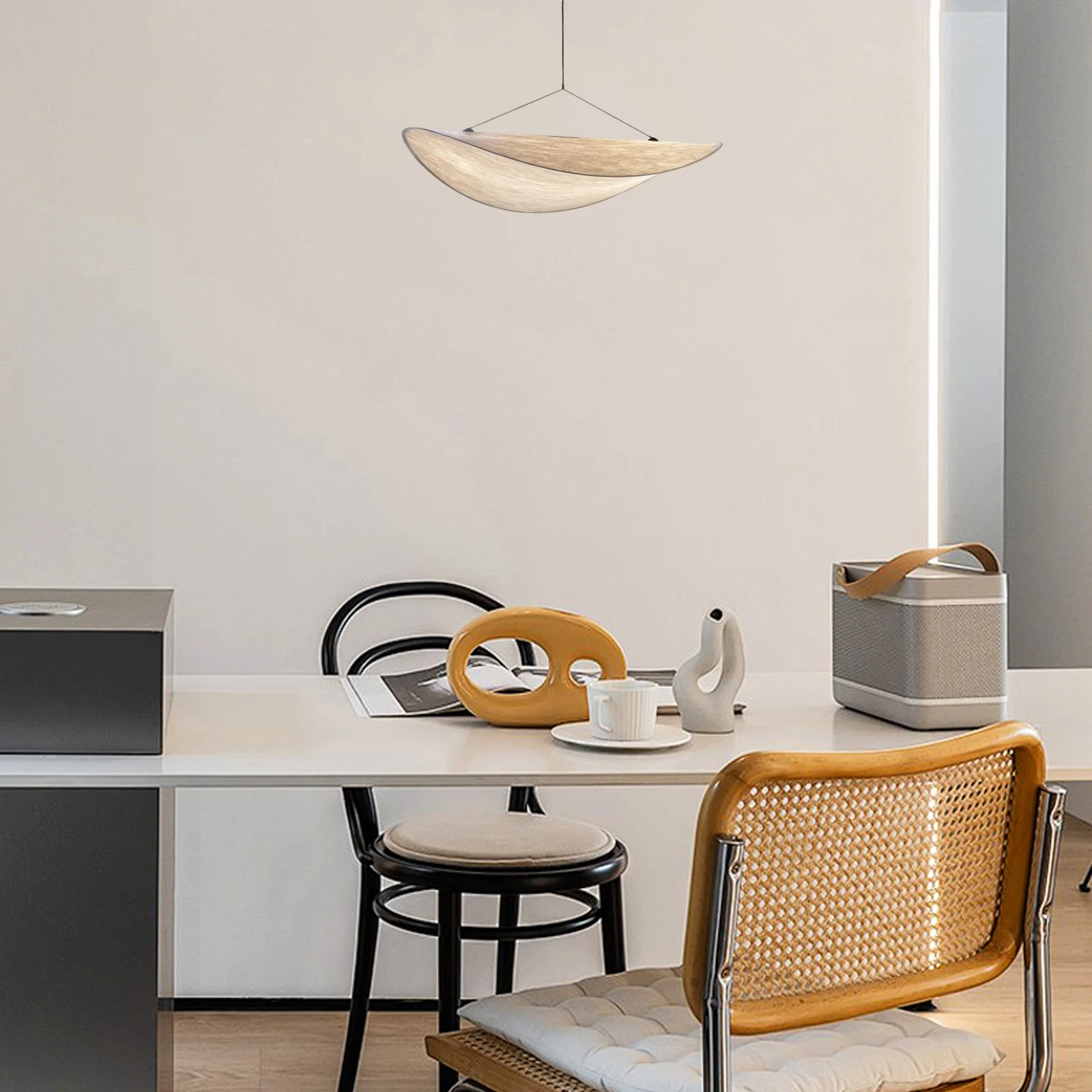
Style and Design Compatibility
The style of your pendant lighting should align with your home's overall decor. Modern pendant light designs often feature clean lines, geometric shapes, and minimalist aesthetics, making them ideal for contemporary interiors. However, you should also consider the room's existing colour palette, furniture, and architectural elements to ensure harmony.
Pendant lights come in a variety of materials and finishes, from sleek metals to textured glass. For a cohesive look, match the finish of the light fixture to other elements in the room, such as cabinet handles or furniture legs. If your home features a mix of traditional and modern styles, opt for transitional pendant lighting that bridges the gap between the two.
Tip: LED pendant lights offer unparalleled flexibility in design. They are available in various shapes, colours, and finishes, allowing you to customise your lighting fixtures to suit your personal taste.
To further illustrate the advantages of LED pendant lights, consider the following comparison:
Feature |
LED Bulbs |
Incandescent Bulbs |
|---|---|---|
Energy Efficiency |
Uses ~80% of electricity for light |
Wastes ~90% generating heat |
Lifespan |
Lasts ~50,000 hours (up to 100,000) |
Lasts ~1,000 hours |
Wattage Requirement |
6-10 watts for equivalent light |
60 watts for equivalent light |
Flexibility |
Available in various colours and forms |
Limited in design options |
This table highlights why LED pendant lights are a superior choice for modern interiors. They not only save energy but also offer a longer lifespan and greater design versatility, making them a practical and stylish addition to any home.
Material and Finish
The material and finish of a pendant light significantly influence its overall appearance and durability. When selecting a lighting fixture, you should consider how its material complements the room's decor and withstands daily wear. Common materials for pendant lights include metal, glass, wood, and fabric. Each material offers unique benefits and aesthetic appeal.
Metal pendant lights are a popular choice for modern interiors. They provide a sleek and industrial look, making them ideal for contemporary spaces. Brushed nickel, matte black, and polished chrome are common finishes that add a touch of sophistication. Glass pendant lights, on the other hand, create a sense of elegance and transparency. Clear or frosted glass shades diffuse light beautifully, enhancing the ambience of any room.
For a more natural and rustic feel, wooden pendant lights are an excellent option. They bring warmth and texture to a space, making them suitable for Scandinavian or bohemian interiors. Fabric shades, often used in drum pendant lights, soften the light and create a cosy atmosphere. These are perfect for bedrooms or living rooms where comfort is a priority.
When choosing the finish, you should ensure it aligns with other elements in the room. For instance, a brass finish pairs well with warm-toned furniture, while a black or chrome finish complements cooler tones. The right combination of material and finish can transform your pendant light into a statement piece that enhances the room's design.
Tip: Opt for durable materials and finishes that are easy to clean and maintain. This ensures your lighting fixtures remain in pristine condition for years to come.
Energy Efficiency and Brightness
Energy efficiency is one of the most compelling reasons to choose LED pendant lights. These lights consume significantly less energy compared to traditional incandescent bulbs, helping you reduce electricity bills and lower your carbon footprint. LEDs convert most of the energy they use into light, minimising waste and maximising efficiency.
When selecting LED pendant lights, you should also consider brightness levels. Brightness is measured in lumens, not watts, as is commonly misunderstood. For task lighting, such as in kitchens or workspaces, you may need higher lumen output. In contrast, ambient lighting in living rooms or bedrooms requires softer, more diffused light.
Modern LED technology allows you to customise brightness levels with dimmable options. This feature provides flexibility, enabling you to adjust the light intensity based on the time of day or the mood you wish to create. Additionally, LEDs are available in various colour temperatures, ranging from warm white to cool daylight. Warm white light creates a cosy and inviting atmosphere, while cool daylight is ideal for areas requiring focus and clarity.
Note: Always check the Colour Rendering Index (CRI) of LED lights. A CRI of 80 or higher ensures accurate colour representation, making your interiors look vibrant and true to life.
By prioritising energy efficiency and brightness, you can select lighting fixtures that not only save energy but also enhance the functionality and ambience of your home.
Popular Types of Modern Pendant Lights
Linear Pendant Lights
Linear pendant lights are a sleek and functional choice for modern interiors. These fixtures feature a long, narrow design, making them ideal for illuminating dining tables, kitchen islands, or office desks. Their streamlined appearance complements contemporary and minimalist decor, offering both practicality and style.
Market trends reveal that linear LED pendant lights are gaining popularity due to their energy efficiency and customisation options. For example, the Nacelle Linear Pendant Lights offer slim, handcrafted designs with contrasting finish endcaps, while the PROSquare3 Pendant provides SmartBeam® capabilities for precise illumination. Both options deliver evenly lit, fully dimmable LEDs, ensuring optimal lighting for various tasks.
Feature |
Nacelle Linear Pendant Lights |
PROSquare3 Pendant |
|---|---|---|
Design |
Slim, handcrafted design with oval profile |
Specification grade with SmartBeam® capabilities |
Dimensions |
4ft, 6ft, and 8ft lengths; 1.375" wide, 2.375" high |
3" aperture |
Illumination Quality |
Evenly lit with fully-dimmable LEDs |
High CRI, comfortable illumination |
Customisation Options |
Contrasting finish endcaps |
Range of finishes and colours |
Compliance |
BAA and BABA compliant |
N/A |
Performance Metrics |
High or low lumen output options |
Best-in-class efficiency and beam control |
These features make linear pendant lights one of the most popular choices for adding pendant lighting to modern spaces.
Cluster Pendant Lights
Cluster pendant lights combine multiple smaller pendants into a single fixture, creating a striking visual impact. This type of lighting is perfect for spaces where you want to make a bold statement, such as entryways or dining areas. The clustered arrangement adds depth and dimension, transforming the fixture into a focal point.
Cluster pendant lighting is highly versatile. You can choose from symmetrical designs for a clean, organised look or opt for asymmetrical arrangements to add a touch of artistic flair. These lights work well in both modern and eclectic interiors, blending seamlessly with various decor styles.
Tip: When installing cluster pendant lights, ensure the height and spacing are adjusted to suit the room's proportions. This enhances the overall aesthetic and prevents the fixture from appearing too crowded or sparse.
Sculptured Pendant Lights
Sculptured pendant lights are the epitome of artistic lighting. These fixtures combine innovative design with functionality, making them ideal for contemporary pendant light installations. Their unique shapes and intricate details turn them into statement pieces that elevate any room's decor.
Aesthetic performance evaluations highlight the benefits of sculptured LED pendant lights. These fixtures maximise heat dissipation, ensuring colour stability and consistent lumen output. Advanced dimming circuits allow for adaptive lighting, while high colour rendering LEDs enhance the quality of illumination. Sculptural designs unite style and sophistication, making them a standout choice for modern interiors.
Note: Sculptured pendant lights often incorporate integrated LED technology, which reduces flicker and protects the LEDs from electrical issues. This ensures long-lasting performance and superior light quality.
By choosing sculptured pendant lights, you can add a touch of elegance and creativity to your home while enjoying the benefits of advanced lighting technology.
Drum Pendant Lights
Drum pendant lights offer a timeless design that blends functionality with elegance. Their cylindrical shape diffuses light evenly, creating a warm and inviting atmosphere. These fixtures are ideal for spaces like dining rooms, bedrooms, or lounges where you want to achieve a cosy ambience. The drum design complements various interior styles, from modern to transitional, making it a versatile choice for your home.
When selecting drum pendant lights, consider their technical performance to ensure optimal lighting. These fixtures often feature LED technology, which enhances energy efficiency and light diffusion. For example, drum LED pendant lights typically have the following specifications:
Measurement |
Value |
|---|---|
Wattage |
|
Luminous Flux |
1000lm Up / 1000lm Down |
CCT |
2700K - 3000K - 4000K - 6000K |
CRI |
>80 |
Beam Angle |
Diffused |
UGR |
<19 |
Lamp Lumen Lifetime |
30,000 hrs @L70/B50 |
These measurements highlight the efficiency and longevity of drum LED pendant lights. Their diffused beam angle ensures soft illumination, while the high Colour Rendering Index (CRI) enhances the vibrancy of your interiors.
Tip: Drum pendant lights with adjustable colour temperatures allow you to customise the lighting to suit different moods and activities.
By choosing drum pendant lights, you can achieve a balance between practicality and style, transforming your space into a comfortable and visually appealing environment.
Globe Pendant Lights
Globe pendant lights bring a touch of sophistication to modern interiors. Their spherical design creates a striking visual impact while providing uniform illumination. These fixtures work well in spaces like kitchens, entryways, or bathrooms, where you want to combine functionality with aesthetic appeal.
LED globe pendant lights offer significant environmental and energy efficiency benefits. Their advanced technology ensures minimal energy waste and maximises light output. Consider the following statistics:
Statistic |
Description |
|---|---|
Energy Efficiency |
LED lights are up to 80% more efficient than traditional lighting. |
Energy Conversion |
95% of energy in LEDs is converted into light, only 5% is wasted as heat. |
Power Consumption |
A typical 84-watt fluorescent can be replaced by a 36-watt LED for the same light output. |
Toxic Elements |
LEDs contain no toxic elements, unlike fluorescent lights which contain mercury. |
Light Distribution |
LEDs focus light in one direction, reducing the number of lights needed. |
Lifespan |
LEDs last up to six times longer than other types of lights, reducing resource use. |
These advantages make globe pendant lights an eco-friendly and cost-effective choice for your home. Their focused light distribution reduces the need for multiple fixtures, simplifying your lighting setup.
Note: Globe pendant lights are available in various finishes, such as frosted glass or polished metal, allowing you to customise their appearance to match your decor.
By incorporating globe pendant lights into your interiors, you can enjoy energy-efficient lighting while enhancing the visual appeal of your space.
Best Locations for Pendant Lighting in Your Home
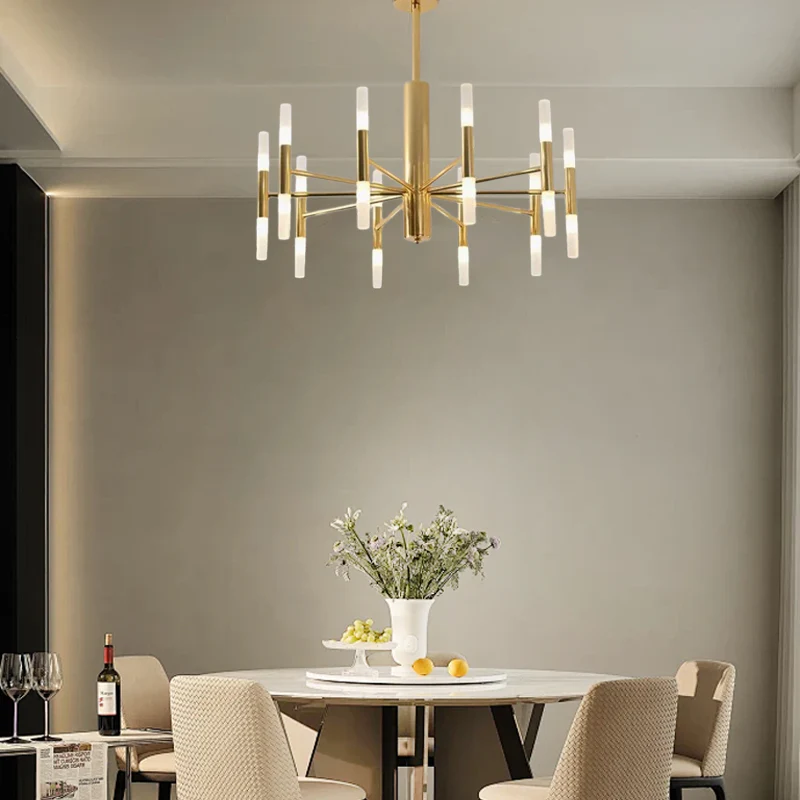
Kitchen and Dining Areas
Pendant lighting plays a crucial role in enhancing the functionality and aesthetics of kitchens and dining areas. In the kitchen, pendant lights are often installed above islands or countertops to provide focused task lighting. This placement ensures that your workspace is well-lit for activities like chopping, cooking, or baking. For dining areas, pendant lights create a warm and inviting atmosphere, making meals more enjoyable.
When positioning pendant lights in these spaces, consider the height and spacing. For kitchen islands, the bottom of the pendant light should hang 30 to 36 inches above the surface. This height provides ample illumination without obstructing your view. In dining rooms, the light should be positioned 28 to 34 inches above the table to create a cosy yet functional ambience.
A spatial analysis of LED pendant lights reveals that optimal placement improves light distribution and enhances the overall effectiveness of the fixture. The following table summarises key findings:
Key Findings |
Implications for LED Placement |
|---|---|
Optimal LED placement strategy improves signal quality |
Enhances the effectiveness of LED pendant lights in various home areas |
Reduction in root mean square delay at lower semi-angle values |
Suggests specific angles for optimal light distribution |
Improved mobile coverage area |
Indicates better overall lighting and communication efficiency in homes |
By following these guidelines, you can maximise the impact of pendant lighting in your kitchen and dining areas, ensuring both practicality and style.
Living Rooms and Lounges
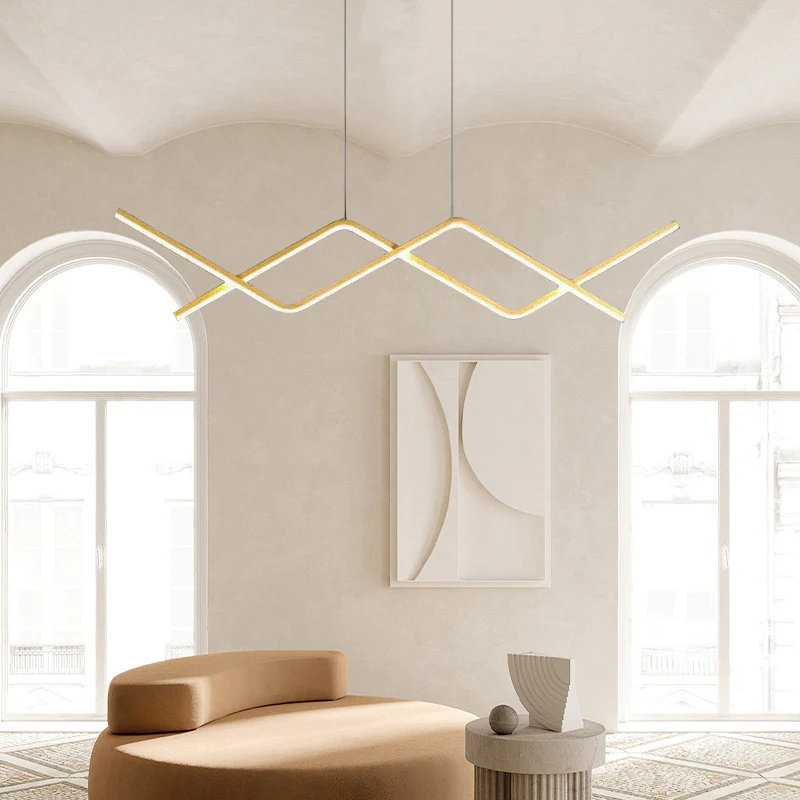
Pendant lighting in living rooms and lounges serves as both a functional and decorative element. These spaces often require layered lighting to accommodate various activities, such as reading, relaxing, or entertaining guests. Pendant lights can act as focal points, drawing attention to specific areas like coffee tables or seating arrangements.
To achieve the best results, choose modern pendant light designs that complement your living room's decor. For example, sculptured or cluster pendant lights add a touch of elegance and creativity, while drum pendant lights create a softer, more intimate glow. Position the lights at a height that avoids glare and ensures even illumination across the room.
Usage statistics highlight the functional benefits of LED pendant light installations in homes:
Energy-efficient lighting can lead to significant savings on energy bills over time, despite higher initial costs.
LED bulbs last up to 50,000 hours or more, far surpassing the lifespan of incandescent and fluorescent bulbs.
LEDs use up to 75% less energy than incandescent bulbs and about 50% less than fluorescent bulbs.
Reduced waste and lower greenhouse gas emissions contribute to a more sustainable environment.
By incorporating pendant lighting into your living room, you can create a versatile and energy-efficient space that adapts to your needs.
Bedrooms and Reading Nooks
Pendant lighting in bedrooms and reading nooks combines functionality with a touch of sophistication. In bedrooms, pendant lights can replace traditional bedside lamps, freeing up space on nightstands while providing focused lighting for reading or relaxing. For reading nooks, pendant lights offer targeted illumination, ensuring comfort and reducing eye strain.
When selecting pendant lights for these areas, consider adjustable options that allow you to control brightness levels. Dimmable LED pendant lights are particularly useful, as they let you customise the lighting to suit different moods or activities. Warm white light is ideal for creating a cosy and inviting atmosphere, while cooler tones work well for focused tasks.
Proper placement is essential for achieving the desired effect. In bedrooms, hang pendant lights at a height that aligns with the top of your mattress or slightly above. For reading nooks, position the light to illuminate the area without casting shadows. This thoughtful approach ensures that your pendant lighting enhances both the functionality and aesthetics of the space.
Tip: Choose pendant lights with a high Colour Rendering Index (CRI) to ensure accurate colour representation, making your interiors look vibrant and true to life.
Hallways and Entryways
Hallways and entryways often serve as the first impression of your home. Pendant lighting in these areas can transform them into welcoming and visually appealing spaces. By carefully selecting LED pendant lights, you can achieve both functionality and aesthetic charm.
When choosing pendant lighting for hallways, focus on creating layers of light. Combining ambient lighting with accent lighting enhances the depth and dimension of the space. For example, a single pendant light can act as a focal point, while recessed lights or wall sconces provide supplementary illumination. This layered approach ensures the hallway feels inviting and well-lit.
Entryways benefit from pendant lighting that balances style and practicality. A statement pendant light can draw attention to the centre of the space, creating a warm and inviting atmosphere. Consider fixtures with adjustable brightness to adapt the lighting to different times of the day.
Key metrics determine the effectiveness of LED pendant lights in hallways and entryways:
They create a welcoming ambience, making the space feel inviting.
They enhance visual appeal, adding sophistication to the decor.
Layered lighting designs improve the overall aesthetic and functionality.
Tip: Choose pendant lights with dimmable LED technology to customise the brightness and mood of your hallway or entryway.
By incorporating pendant lighting thoughtfully, you can elevate the design of these transitional spaces while ensuring they remain functional and stylish.
Bathrooms and Vanity Spaces
Bathrooms and vanity areas require lighting that combines practicality with comfort. Pendant lighting in these spaces can provide focused illumination for tasks like grooming and makeup application while enhancing the overall ambience.
When selecting LED pendant lights for bathrooms, prioritise fixtures with high waterproof ratings. A minimum IP56 rating ensures the lights are protected from moisture, making them suitable for humid environments. High CRI values are equally important, as they provide accurate colour representation, which is essential for tasks like applying makeup or shaving.
Adjustable brightness and colour temperature add versatility to bathroom lighting. Dimmable pendant lights allow you to create a relaxing atmosphere for baths or a bright setting for morning routines. Colour-tuning options help reduce eye strain and improve comfort, especially in spaces with limited natural light.
Performance tests validate the functionality of LED pendant lights in bathrooms:
Waterproof rating: Protects fixtures from moisture and ensures durability.
High CRI values: Enhances colour accuracy for grooming tasks.
Dimmability and colour-tuning: Offers flexibility for different activities and moods.
Note: Opt for pendant lights with frosted glass shades to diffuse light evenly and minimise glare.
By choosing LED pendant lighting with these features, you can create a bathroom that is both functional and visually appealing. Vanity spaces, in particular, benefit from pendant lights that combine style with precision, ensuring you have the perfect lighting for your daily routines.
Selecting the right LED pendant lights involves more than just aesthetics. You must consider placement, size, style, and functionality to ensure the lighting complements your home. Explore the wide variety of modern pendant lights available to find designs that suit your preferences and needs.
To make an informed choice, measure your space carefully and test the light intensity before purchasing. This ensures the fixture fits proportionally and provides the desired brightness. Dimmable options offer flexibility, allowing you to adjust the lighting to match different activities or moods. Thoughtful planning will help you create a well-lit, stylish, and functional environment.
FAQ
What is the ideal height for hanging pendant lights?
The ideal height depends on the location. For kitchen islands, hang the light 30–36 inches above the surface. In dining areas, position it 28–34 inches above the table. Adjust the height to avoid glare and ensure proper illumination.
Can LED pendant lights be dimmed?
Yes, many LED pendant lights come with dimmable options. These allow you to adjust brightness levels to suit different activities or moods. Ensure the fixture is compatible with dimmer switches before purchasing.
How do I choose the right size for a pendant light?
Measure the width of the surface below the light. Select a pendant with a diameter no larger than one-third of this width. For high ceilings, opt for larger or elongated designs to maintain proportionality.
Are LED pendant lights energy-efficient?
Absolutely. LED pendant lights consume up to 80% less energy than traditional bulbs. They convert most energy into light, minimising waste. Their long lifespan also reduces replacement costs, making them a sustainable choice.
What colour temperature is best for pendant lighting?
Choose warm white (2700K–3000K) for cosy spaces like bedrooms or dining areas. Opt for cool daylight (4000K–6000K) in kitchens or workspaces requiring focus. Adjustable colour temperatures offer flexibility for different settings.

